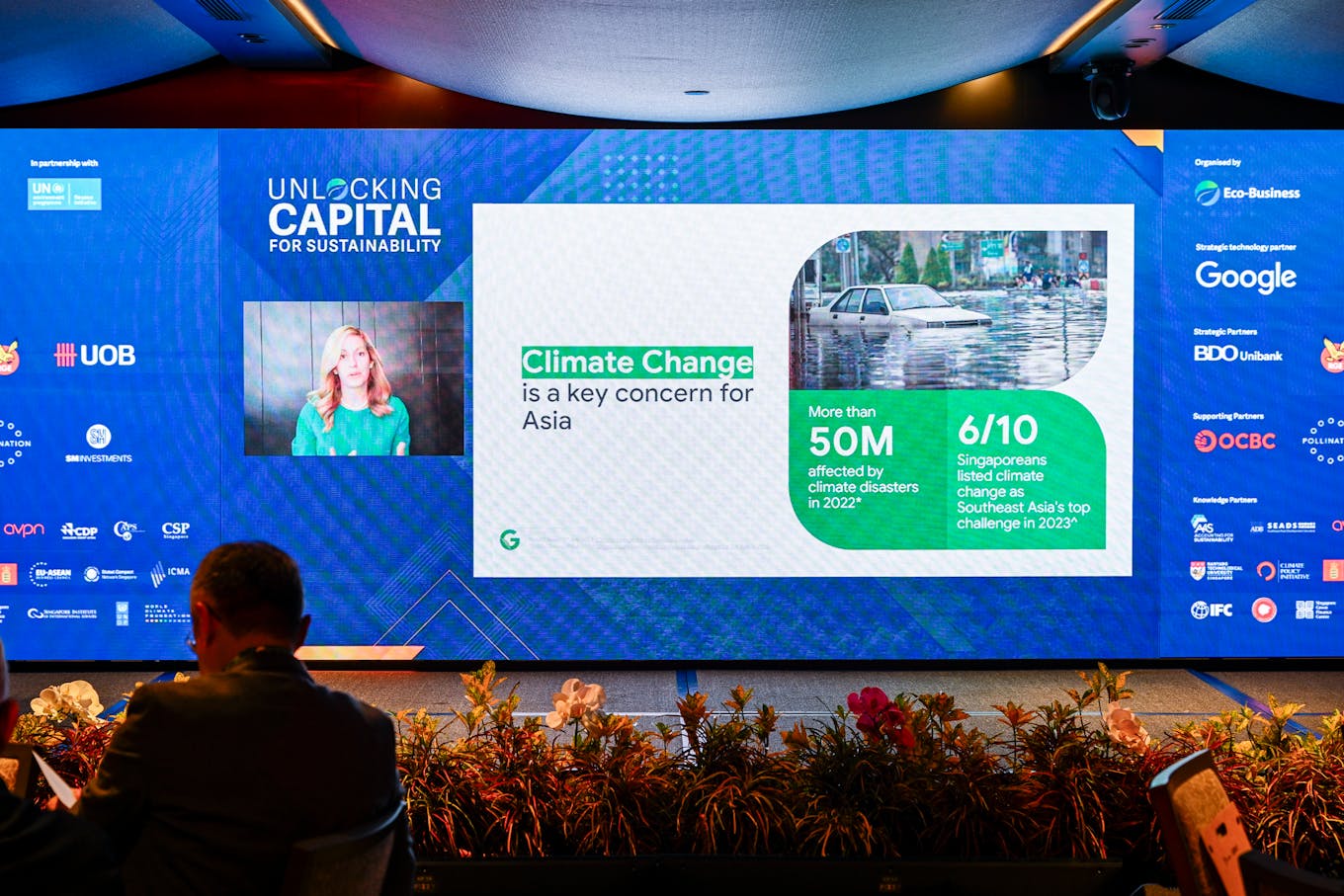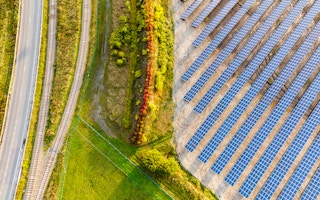Big tech firms have emerged as the largest corporate buyers of renewable energy in the United States, driving up demand for clean energy in the world’s second largest greenhouse gas emitting nation.
In 2022 alone, US-based companies – led by Amazon, Meta and Google – contracted some 77 gigawatts (GW) of renewable energy – enough to power over 1,000 data centres at the same time. The technology industry contracted just under half (48 per cent) of this total.
The share of coal in US power generation is expected to fall to just 12 per cent by 2030. In contrast, Asia remains a fossil fuel stronghold, accounting for 76 per cent of the world’s coal capacity, and 80 per cent of global coal production and consumption.
The region’s demand for carbon-based energy is expected to continue to rise amid rapid industrial development. In 2022, planet-warming emissions from coal-fired power plants grew by over 2 per cent year-on-year, led by electricity generation hikes in Asia’s emerging economies.
Inflection point
“Climate change, as we know it, is one of the defining challenges of our time, and it’s particularly critical in Asia – a region on the frontline of the climate crisis,” underscored Kate Brandt, Google’s chief sustainability officer, as keynote speaker at the Unlocking capital for sustainability event held in Singapore last month.

Kate Brandt, chief sustainability officer, Google presented the opening keynote at Unlocking capital for sustainability in Singapore last month. Image: Eco-Business
“Businesses are facing an inflection point. There is an urgent call for systemic global action to reduce emissions,” she continued, highlighting Google’s efforts to accelerate the clean energy transition in the region and their pledge for a 24/7 carbon-free energy (CFE) future.
Google, alongside fellow tech giants Amazon, Apple, Cisco, Meta and Samsung, is a founding member of the Asia Clean Energy Coalition – a multi-stakeholder alliance that aims to lobby policymakers for renewable energy adoption and investment in the region.
Southeast Asia faces the two-pronged challenge of increasing total investment in the energy sector while also increasing the share of this investment that goes into clean energy. Between 2016 and 2020, the annual average energy investment in the region reached US$70 billion. However, only 40 per cent of that investment went into renewable energy infrastructure. Southeast Asia requires an annual investment of about US$180 billion in clean energy by 2030 to meet the International Energy Agency’s (IEA) net-zero by 2050 scenario.
A survey of signatories to RE100, a collective for firms committed to use only renewable energy, found that only 16 per cent of the electricity consumption of members in Asia-Pacific was supplied by renewables, compared to 59 per cent in North America and 81 per cent in Europe.
“While there are many unprecedented challenges [we] are facing, it’s more important than ever for leaders to prioritise building a sustainable company,” said Brandt, adding that Southeast Asia requires at least US$2.8 trillion in infrastructure financing to sustain economic growth and fight climate change.
“
Since our founding, our efforts to mitigate climate change have started with our own operations, and we’ve worked hard to lead by example with the ultimate goal of driving larger systems change.
Kate Brandt, chief sustainability officer, Google
Carbon-free ‘moonshot’
Google began purchasing clean energy as early as 2010, buying more renewable energy than any other company over the last decade. The Silicon Valley giant has since signed more than 80 power purchase agreements, totalling around 10 GW of renewable energy generation capacity – equivalent to the energy generated from 31 million solar panels.
Brandt adds that they expect to spend another US$10 billion to purchase clean energy through to 2040, while pledging to support the endeavours of the Clean Energy Buyers Association’s clean tech innovation accelerator and the Clean Energy Demand Initiative’s bridging programmes for renewable investment through a US$1 million grant from Google.org.
“In 2017, we became the first major company to match 100 per cent of the annual electricity consumption of our global operations with renewable energy purchases, which we’ve achieved every year since,” added Brandt.
Heading into its third decade of climate action, Google’s ambitions have evolved, committing to the ‘moonshot’ of achieving net-zero emissions across all of its operations and value chain, and to run on 24/7 carbon-free energy on every grid they operate on by 2030.
Also known as hourly matching, 24/7 CFE means that every kilowatt-hour of electricity consumption is matched with carbon-free electricity sources, every hour of every day.
Google is among the first 140 signatories of the 24/7 Carbon-Free Energy Compact convened by the United Nations. Google is joined by Microsoft among the signatories. The two firms are the only tech behemoths that have pledged to match their entire electricity demand on an hourly basis with carbon-free energy by 2030.
“Carbon-free energy contracting can be challenging given local market dynamics and resource availability, including certain Asia Pacific grid regions,” Brandt explained of the difficulties of the CFE transition.
“Transitioning to a carbon-free future will require stronger government policies and partnerships with many other organisations. That’s why Google advocates for stronger clean energy and climate policies, and partners with many other organisations to accelerate clean energy and climate progress.”
Google estimates that its decarbonisation pledges will directly generate more than 20,000 new jobs in clean energy and associated industries globally by 2025.
Before the end of 2020, all of Google’s data centres achieved 67 per cent round-the-clock carbon-free energy use. Since then, five of Google’s data centres around the globe are now operating above 90 per cent CFE. Data centres account for 1 per cent of annual energy-related greenhouse gas emissions globally.
Maximising AI
Brandt cited research that finds that six in 10 Singaporeans list climate change as Southeast Asia’s top challenge in 2023, according to an ISEAS–Yusof Ishak Institute report.
However, a recent Google Cloud sustainability survey that tapped 1,476 top-level executives across 16 countries found that 72 per cent of respondents admitted to lacking the expertise and clear decision-making to advocate for sustainability endeavours.
The report showed that environmental, social and governance (ESG) efforts have slid to third among organisational priorities, after being the top imperative in 2022. This is despite 85 per cent of executives acknowledging that customers are more likely to engage and do business with sustainable brands.
“[Other] business leaders are at a loss for what to do next,” explained the sustainability officer. “We believe that technological innovation is critical to the transition to a lower-carbon future. Since our founding, our efforts to mitigate climate change have started with our own operations, and we’ve worked hard to lead by example with the ultimate goal of driving larger systems change.”
Google has rolled out a number of climate action initiatives banking on the emerging opportunities presented by the use of artificial intelligence (AI) and the maximisation of data through technology. Among them are Project Green Light, Flood Hub, and the Environmental Insights Explorer.
Project Green Light – now with 12 city partners across four continents including Bali and Jakarta in Indonesia and Bangalore, Hyderabad and Kolkata in India – uses AI and Google Maps to help city engineers model traffic patterns that optimise vehicle flow and reduce stop-and-go emissions.
Meanwhile, Flood Hub’s AI provides flood forecasts and early warning systems up to seven days in advance to 460 million people in 80 countries – piloted in India, Bangladesh and Sri Lanka – by scanning global weather predictions and satellite imagery.
“[We] believe AI can also be a transformational technology that provides compelling and helpful benefits to people and society when developed responsibly,” Brandt added, highlighting the changes Google’s Environmental Insights Explorer has already brought key cities like Austin and Copenhagen.
The free Environmental Insights Explorer platform provides actionable climate and sustainability data to more than 42,000 cities and regions worldwide, including estimates of transportation emissions and the solar power potential of urban rooftops.
“AI-powered tools can help address some of the worst impacts of climate-related disasters, from early warnings of natural disasters to reducing the impact of wildfires. Given the scale of the challenge we have at hand, I strongly believe innovation is key to getting us to a better future,” she concluded.















